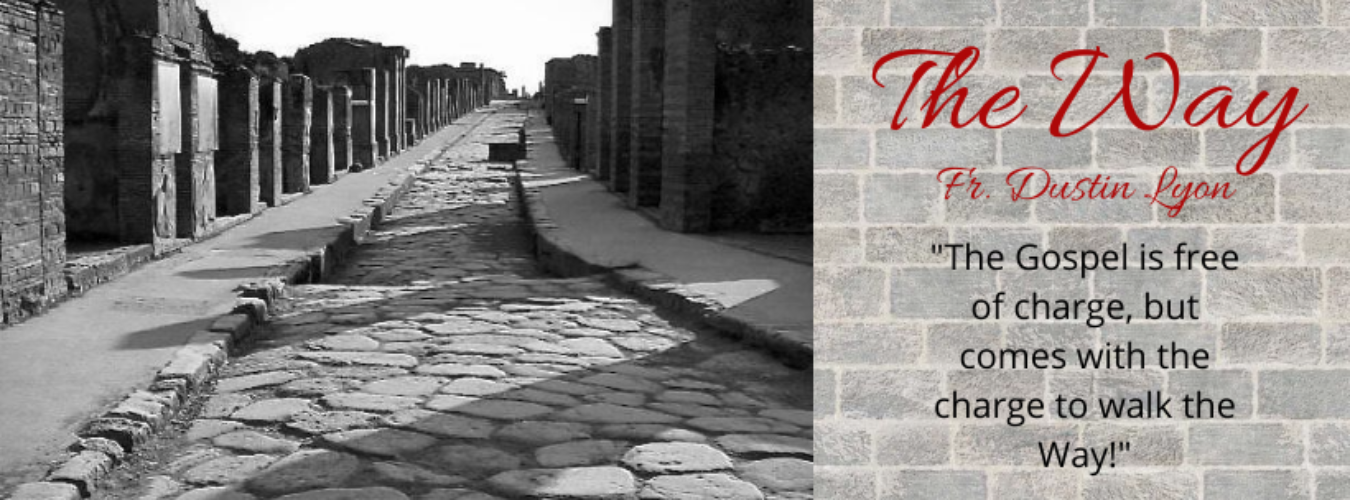Gospel: Mark 15:43–16:8
Oops!
Joseph of Arimathea does something unexpected—he takes the body of Jesus, wraps it in linen, and lays it in a tomb carved from rock. He rolls a stone against the entrance, sealing it shut. It’s an act of devotion, yes. But also of finality. Of closure.
This is odd. If Joseph was a disciple of Jesus, even secretly, then surely he had heard Jesus say, not once but many times: “The Son of Man will be killed, but after three days he will rise.” If that’s true, why go through all the effort of preparing the body, sealing it in a tomb, and walking away?
What if he believed—but didn’t quite believe? What if he loved—but didn’t yet understand? What if he thought this treasure he had in Jesus was over, and the only thing left was to preserve what remained?
Ugh!
We may shake our heads at Joseph, but don’t we do the same thing?
I remember as a child receiving a beautiful candle from my grandparents for Christmas. It was smooth and white with delicate carvings, and I treasured it. But I was afraid to light it. If I used it, it would melt away and be gone. So I put it on a shelf, year after year. It’s still whole somewhere in my home—but it never gave me its light or fulfilled its purpose.
Or think of a pristine sketchbook with blank pages, clean and full of promise. How many of us have been afraid to make that first mark? Afraid to mess it up. Afraid to create something imperfect. So we leave it empty, and lose the joy of creating, exploring, growing.
How many of us treat our faith like that? It’s precious, yes—but we think it’s fragile. We lock it away, seal it up, keep it safe and unused. We don’t want to risk it, test it, or share it too freely.
Like Joseph, we treat the promise of resurrection as something that needs to be buried and protected rather than proclaimed and lived.
Aha!
Faith isn’t meant to be preserved like a relic. It’s meant to be lived, even risked.
The myrrh-bearing women go to the tomb expecting death. They bring spices to anoint a corpse. But what do they find? An empty tomb. A young man in white. “Do not be alarmed,” he says. “You seek Jesus of Nazareth, who was crucified. He has risen; he is not here.” The stone is rolled away. The tomb has failed to contain him.
You see, faith is not like a candle that burns up and disappears. It’s like fire that spreads. It gives light when shared. And it grows brighter when it’s used.
And now comes the strangest moment of all: Mark’s Gospel ends with silence. “They fled from the tomb, for trembling and astonishment had seized them. And they said nothing to anyone, for they were afraid.”
That’s it. That’s the ending of the earliest manuscripts. No grand finale. No resurrection appearance. Just fear, confusion, silence.
Why end a gospel like that?
Whee!
Mark is doing something masterful. He’s turning the story around on us.
He’s asking: What will you do now?
Will you stay afraid like the women at first were? Silent like the disciples who fled? Will you wrap your faith in linen and seal it behind a stone?
Or will you go back to the beginning? Will you remember what Jesus said, what Jesus did? Will you tell the story—this story—of life that refuses to stay buried?
Yeah!
Brothers and sisters in Christ, the Gospel is not finished. It is alive—and you are its next chapter.
Your faith may feel fragile. But it’s not. It is fire. It is resurrection. It is a sketchbook waiting to be filled with the messy, holy scribbles of your life.
Don’t bury it. Use it. Speak it. Share it.
Let it light your way—and someone else’s.
In our Orthodox tradition, we proclaim: “Christ is risen from the dead, trampling down death by death, and upon those in the tombs bestowing life!”
He is not in the tomb.
Now go tell the story.
Amen!

